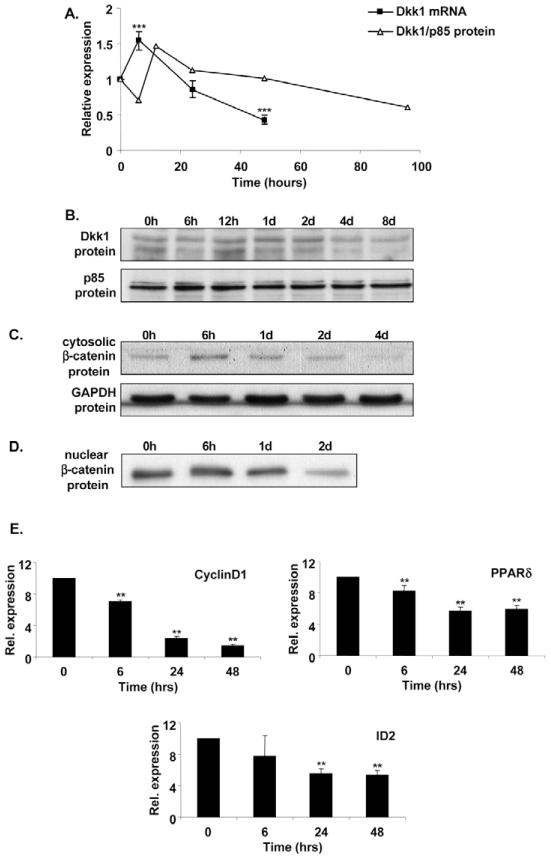Fig. 1.
DKK1 mRNA and Dkk1 protein expression is transiently upregulated during human adipogenesis and correlates with inhibition of canonical Wnt signalling. (A) DKK1 mRNA and protein expression during human adipogenesis. Subcutaneous preadipocytes from eight unrelated subjects were differentiated in vitro and total RNA extracted at the time points indicated. DKK1 mRNA levels were determined by real-time RT-PCR. A plot of the ratio of Dkk1 to p85 protein obtained by densitometry (see Fig. 1B) is also shown alongside the RNA data for comparison. Results are expressed as fold difference relative to baseline (time 0). (B-D) Dkk1 and β-catenin protein expression during human adipogenesis. Subcutaneous preadipocytes were differentiated in vitro and whole-cell lysates (B), cytosolic (C), or nuclear extracts (D) were obtained at the time points indicated and subjected to SDS-PAGE and western blot analysis. p85 PI 3-kinase and GAPDH were used as loading controls. Results are representative of at least two independent experiments. 0h indicates onset of differentiation (3 days post-confluence); 6h, 12h, 1d, 2d, 4d, 8d respectively indicate 6 hours, 12 hours, 1 day, 2 days, 4 days and 8 days post-induction of differentiation. (E) Expression of Wnt target genes during human adipogenesis. CyclinD1, PPARδ and ID2 mRNA levels were determined by real-time RT PCR using RNA from six of the subjects used in A. Rel., relative. **P<0.01, ***P<0.001.

